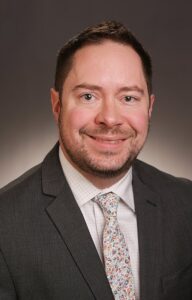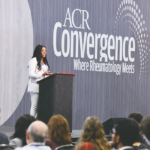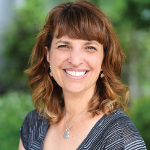At plenaries, don’t hesitate to speak up. “One of the great benefits of the virtual meeting is that it’s very easy to anonymously pop your question into the chat and have it forwarded to the speaker,” Dr. Lewandowski said. “You no longer have to take the brave walk up to the lonely microphone in the middle of the room. [That] makes it a lot more accessible.”
To connect with a speaker afterward, you could send an email reminding them you asked a question and would like to discuss it more, or mention that your question wasn’t addressed and that you’d like to chat about it. You can connect with speakers by clicking on their name in the program. If a session has more than one speaker, you’ll need to click on that specific speaker to bring up their biographical sketch. From that screen, you’ll find ways to send a message, schedule a virtual meeting and follow them on social media. Example: Click here to connect with Dr. Lewandowski. You can also click on the Networking tab for a dropdown menu option to schedule a meeting.
The ACR Convergence Community Hubs are a good way for people with similar interests to discuss sessions and meet new people. They’re coordinated by research or disease interest, she said.
The poster sessions are also a good way to connect. “[A poster session] is a great opportunity to network and make connections because you have one-on-one time with the person who did the research,” Dr. Lewandowski said. “I’d encourage you to look through the posters beforehand and really connect with people at their poster session. They would love to see you there.”
There are also events meant to bolster the fabric of the rheumatology community, such as the #ACRBakeAnythingChallenge, during which attendees are encouraged to bake something and post a picture on social media, inviting responses and interaction.
More Tips
Grant Schulert, MD, PhD, assistant professor of pediatrics at Cincinnati Children’s Hospital Medical Center and chair of the ACR’s Early Career Investigator Subcommittee, offered several suggestions for networking at the meeting.
First, he said, establish your goals. For medical students and residents, this may be as simple as absorbing as much as you can about a career in rheumatology to find out if it’s a good fit for you. For fellows, it may be trying to connect with people who may want to hire you. For junior faculty, it may be starting new collaborations or recruiting fellows or post-docs.



